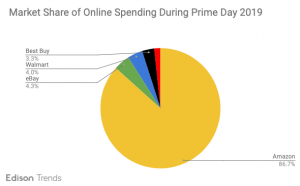
One of the great things about social media marketing is that it’s easy to measure the results of your efforts. But metrics in and of themselves are only numbers. They’re useful only when you employ them to measure progress toward your business goals.
In recent interviews, I spoke with several marketers and asked what metrics they used and what business goals they addressed. There are four types of business metrics you can look at when using social media: audience development, engagement, content amplification, and leads/conversions.
1. Audience Development
When marketers first begin adopting social media, one of their first goals is to build an audience to help them gain awareness for their company and products. The metric marketers use to measure awareness is the number of new followers and subscribers.
2. Engagement
Ideally, customers would not only follow your channel, but also read, pay attention to, and engage with your content. Marketers measure engagement by looking at the number of views, page likes, comments, clicks on the company website from social media, and content consumption driven by social media.
3. Content Amplification
Here’s where social media really shows its power. Social Media allows organizations to not only reach their own followers, but to reach a much wider audience. One way they can do that is to insert hashtags which allows content to be found by anyone searching on that term. But what marketers are really looking for is for their followers to spread the word to their own networks because the number of people seeing the content that way has the potential to grow exponentially.
Ways to measure amplification include the number of shares and retweets. In addition, the content may end up on a syndication site which will spread the word further. Or, a reporter might find the post or tweet and write about it. As a bonus, amplification means that the original viewer was extra engaged with your content because they wouldn’t spread the word if they hadn’t read it and found it interesting.
One tip for improving the amplification of content, according to Joe Schwartz, Vice President, Digital of Kony, Inc., is to first identify the influencers by looking at their Klout Score. Klout is a website that gives people a score based on their social influence. Once Schwartz knows who the influencers are, he suggests sharing content that can help the influencers increase their own influence. Explained Schwartz, “Using Klout we can figure out how to adjust a document that we used in nurture to something different or change the name or some element to increase the reputation of the sharer. By producing content that helps the influencers boost their standing, you ensure that your content is more likely to be shared.”
4. Leads and Conversions
The Holy Grail and end game for all marketing efforts, including social, is leads and conversions. Organizations that have marketing automation solutions that tie into their CRM system can generally track any leads from social media down the pipeline, tracking which content ultimately contributed to a particular deal. At the very least, organizations can track gated assets by giving them a unique campaign ID which can then be tracked throughout the sales process.
Digital & Social Articles on Business 2 Community
(207)
Report Post







